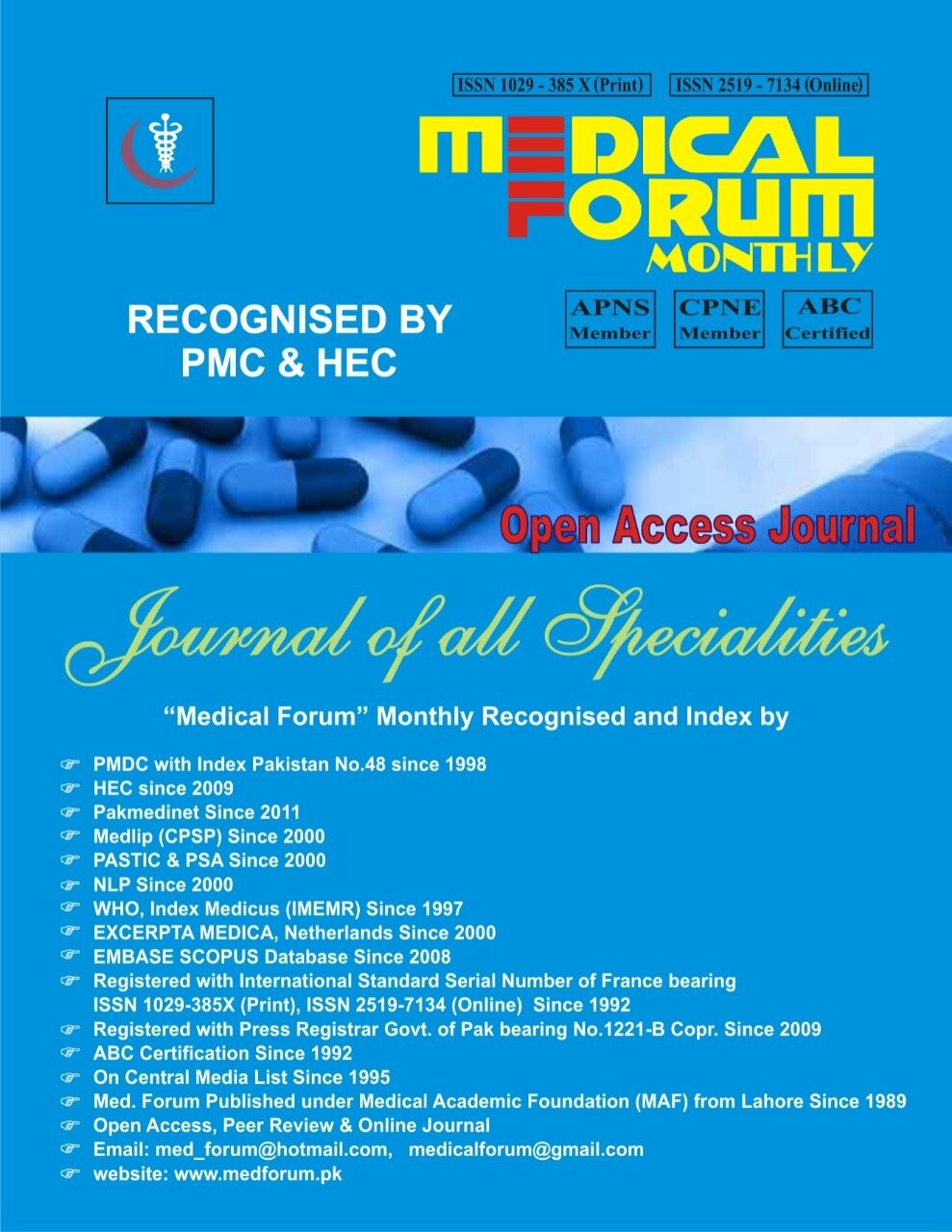
14.Protective Effect of Henna (Lawsonia Inermis Linn.) at Different Doses in Acetaminophen Induced Hepatotoxicity in Albino Rats
Misbah Ishtiaq1, Abeer Anjum2, Irum Naz1, Aneela Ahsan1 and Uzma Azam1
ABSTRACT
Objective: To assess the protective effects of Henna (Lawsonia inermis Linn.) at two different doses on hepatotoxicity caused by acetaminophen in albino rats.
Study Design: Experimental study
Place and Duration of Study: This study was conducted at the Department of Anatomy, Postgraduate Medical Institute (PGMI), Lahore, Pakistan for a period of 12 days starting on June 1st, 2019.
Materials and Methods: The study comprised of 28 male adult albino rats that were divided into 4 groups A, B, C and D. Group A (control group) received 5ml/kg distilled water orally for 10 consecutive days followed by 5ml/kg normal saline intraperitoneally on day 10. Group B was given distilled water (5ml/kg) orally through gavage for 10 consecutive days followed by 750mg/kg acetaminophen dissolved in 5ml per Kg body weight normal saline intraperitoneally as single dose on day 10. Group C was given 100ml/kg Henna leaf extract dissolved in 5ml/kg distilled water given orally through gavage for 10 consecutive days followed by 750mg/kg acetaminophen dissolved in 5ml/kg normal saline intraperitoneally as single dose on day 10. Group D was given 400ml/kg Henna leaf extract dissolved in 5ml/kg distilled water orally through gavage for 10 consecutive days followed by 750ml/kg acetaminophen dissolved in 5ml/kg normal saline intraperitoneally as a single dose on day 10. All rats were sacrificed on day 12 i.e. 48 hours after administration of last dose. Livers were extracted out and sections were stained with Hematoxylin and Eosin stains. Morphological parameters such as diameter of central vein, blood vessels congestion and inflammatory cells infiltrate were studied. Biochemical parameters involved were serum ALT and AST. Results were analyzed by using SPSS version 22.0.
Results: In present study, Microscopic examination of hepatic lobules revealed abrupt increase in the diameter of central vein of Group B animals caused by acetaminophen. When this group is compared with group A (control group) while group C and D showed no significant change in diameter of central veins. Group B also showed blood vessels congestion with stagnant blood cells and disrupted endothelium causing hemorrhage within hepatic stroma. These findings were not observed in groups C & D. Signs of inflammation like infiltration of white blood cells were more appreciable in group B while this inflammation is less prominent in group C & D due to protecting effects of Henna leaf extract in these groups. Both ALT and AST were normal in control whereas raised in toxic group B. After treatment with protective agent at two different doses, ALT and AST were dropped in group C in which low dose of protective agent is used and become near to normal in group D in which high dose of protective agent was used showing hepatoprotective effects of lawsonia inermis Linn.
Conclusion: Taking in account the above mentioned observations and results, it gives a strong support that Henna Leaf (lawsonia inermis Linn.) has significant prophylactic effects on the microarchitecture of the liver that would be destroyed by the toxic effect of acetaminophen.
Key Words: Henna leaf, acetaminophen, hepatotoxicity, micrometry
Citation of article: Ishtiaq M, Anjum A, Naz I, Ahsan A, Azam U. Protective Effect of Henna (Lawsonia Inermis Linn.) at Different Doses in Acetaminophen Induced Hepatotoxicity in Albino Rats. Med Forum 2022;33(5):57-61,
